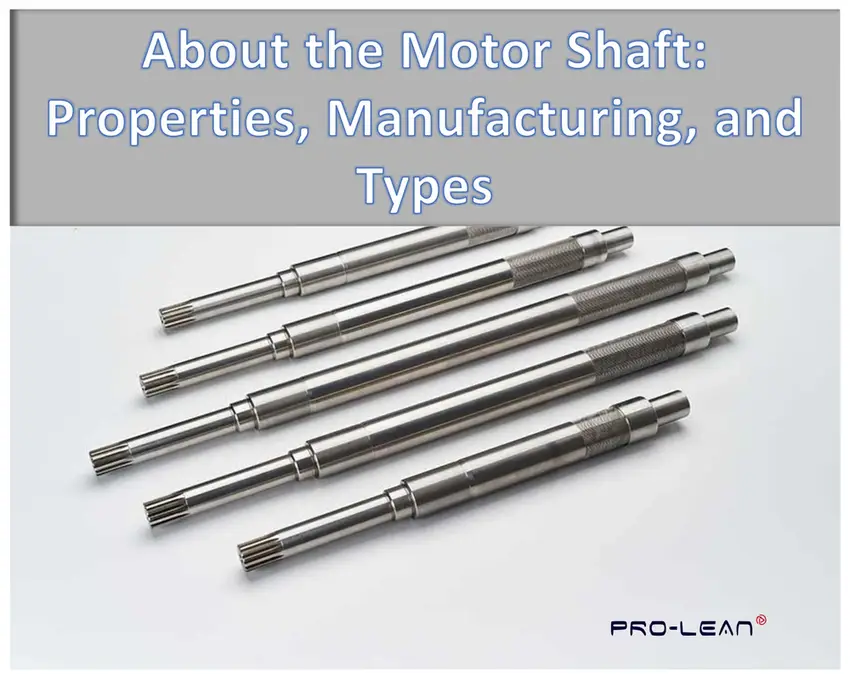
A motor shaft is a cylindrical component that extends from the motor and the housing. It is a fundamental component of the interlink between mechanical systems and electric motors because it helps convert electrical energy into mechanical energy.
Through this part, the motor effectively connects to rotating components including wheels and pulleys.
The motor shaft plays three main roles namely power transmission, alignment of the motor and other components, and support for rotating components. Considering these functions, the shaft is normally made of strong materials like alloy steel and stainless steel.
Are you looking for the most dependable motor shaft for your machinery? To avoid motor shafting failure and the consequent expensive repairs, it is important to source your shafts from a renowned motor shaft manufacturer. Prolean Tech is the motor shaft manufacturing company you have been looking for.
With long-term cooperative relationships with globally renowned enterprises such as Southco, Rockwell Automation, BMW Automation, XCMG, Zoomlion, and Bosch Rexroth, among others, the ISO 9001:2015 certified firm is ready to provide the best motor shaft solutions.
We have extensive experience providing CNC turning, EDM machining and related shaft solutions, the company knows the intricacies of metal machining to suit your requirements. We have the best balance of innovative, advanced, and cost-effective manufacturing solutions.
The motor shaft is a key component of any machinery that has rotating parts. Users of machinery are always looking for the best providers of motor shaft machining services.
To identify the best provider of these services, it is important to understand the basics of the motor shaft. How does the motor shaft work? What are the best materials for motor shafting?
This article will answer these questions and reiterate the suitability of ProleanTech for quality metal shaft manufacturing.
What is a motor shaft?
A motor shaft is a component that looks like a rod, often cylindrical, connected to the motor. Its function is to transfer torque or power from the motor to other systems or devices. As the shaft rotates, it transfers torque and rotation to the systems or devices it is connected to.
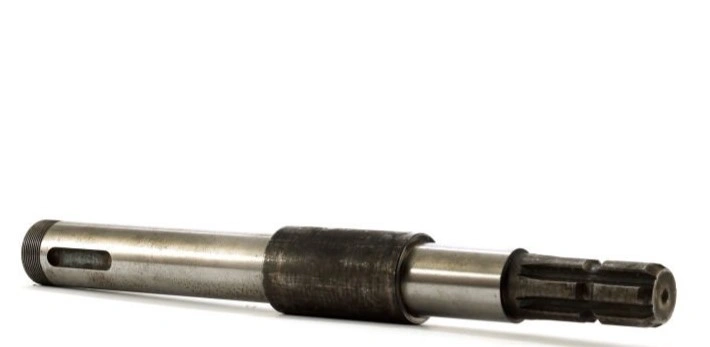
A motor shaft
The motor shaft is a mechanical component of machinery that is considered part of the motor. It is central to the electrical power to mechanical power conversion in machinery.
A quality motor shaft must meet several parameters. First, the motor shaft should have precise concentricity and diameter. These parameters are crucial because if they are not accurate, they may result in misalignments that trigger wear and vibrations.
Other properties of good motor shafts are quality surface treatment, material strength, and capability to handle dynamic loading.
It is important to differentiate between different components in mechanical rotary systems. For instance, in automotive setups, a shaft such as the camshaft does more than just transmit power and torque. It also controls the operation of engine valves.
Check out the Guide to Camshaft Parts, Types, and Manufacturing for more on these shafts.
Try Prolean Now!
Types of Motor Shafts
As you will see in the manufacturing steps, determining the shapes and designs of the shaft is critical. A fundamental consideration by the expert team at ProleanTech is the shaft type.
With 100+ material options and countless design possibilities, we want to narrow down to the custom requirement as much as possible. To add to the standard solid shaft, the types of shaft that emerge often are:
Hollow Motor Shaft
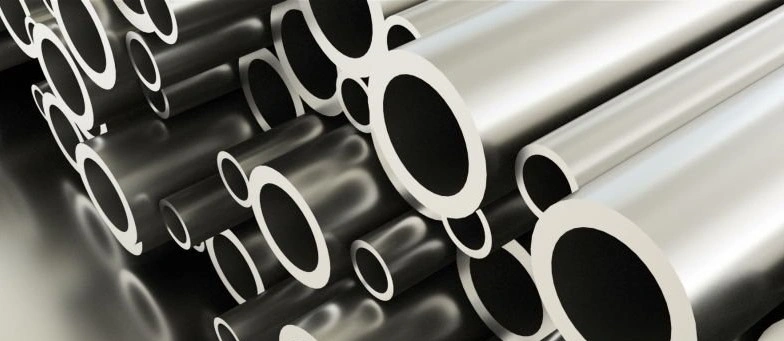
Hollow metal shafts
A hollow shaft has a hole that runs across the entire length. This passage is mostly for minimal weight, which suits application areas like aircraft, cars, and medical equipment.
Threaded Motor Shaft
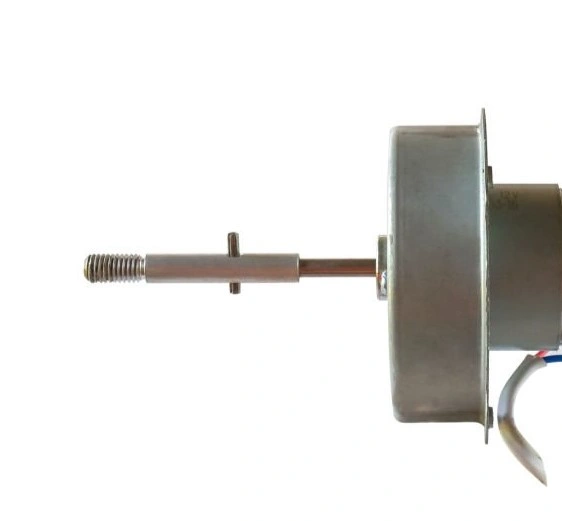
A threaded motor shaft
A motor shafting can also be threaded, internally or externally. These designs are common in devices that must be attached and detached regularly.
Keyed Motor Shaft
Keyed shafts feature a groove that accommodates a key. A key on a motor shaft promotes effective torque and power transfer between the motor and the mechanical components. It also makes the assembly and disassembly of components easy. Keyed motor shafts are cost-effective because replacing keys is relatively affordable.
Tapered Motor Shaft
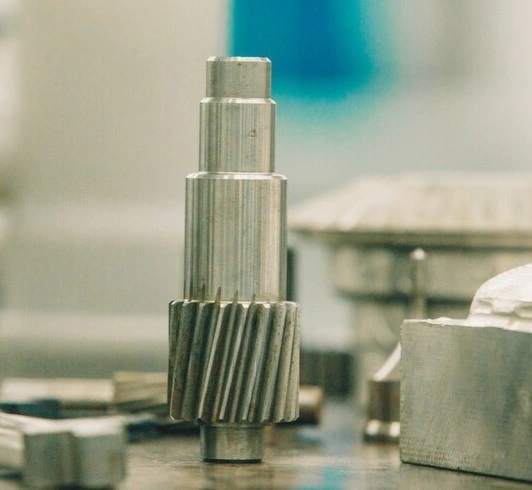
A tapered motor shaft
The tapered motor shaft is necessary for gears and bearings that can fit into the shaft. These are common in car wheel hubs.
Splined Motor Shaft
Splines are longitudinal grooves on the shaft. These features connect effectively with components and matching designs.
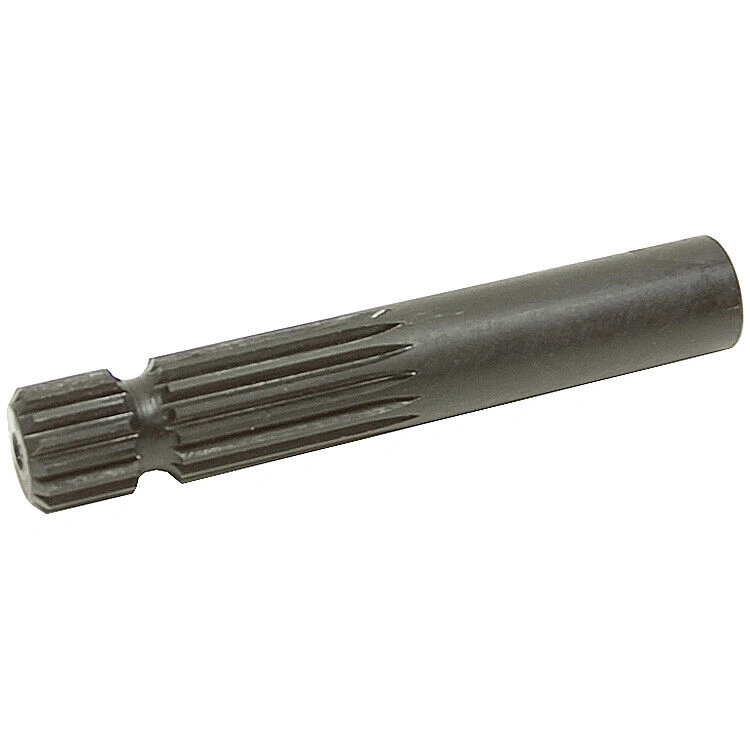
A splined motor shaft
What are the different materials for motor shafts?
ProleanTech recognises the importance of choosing the right motor shaft material’s rigidity, longevity, and weight. By choosing the right material, we ensure your motor shaft is strong enough for the load and cost-effective to manufacture and fabricate.
Many materials are available for shaft manufacture, but the commonly used are discussed next:
Composites Motor Shaft
With engineering advancement, composite motor shafts are becoming more common. These materials offer a combination of low weight and strength. These shafts also have vibration-dampening characteristics suitable for automotive and aerospace applications.
Steel Motor Shafting
The versatility of steel makes the material a strong candidate for motor shaft material. Motor shaft manufacturers rate the material highly for its availability, longevity, and machinability.
Steel shafts are incredibly strong and can withstand the dynamic torque and movements of the motor. The material has high shear and tensile strength.
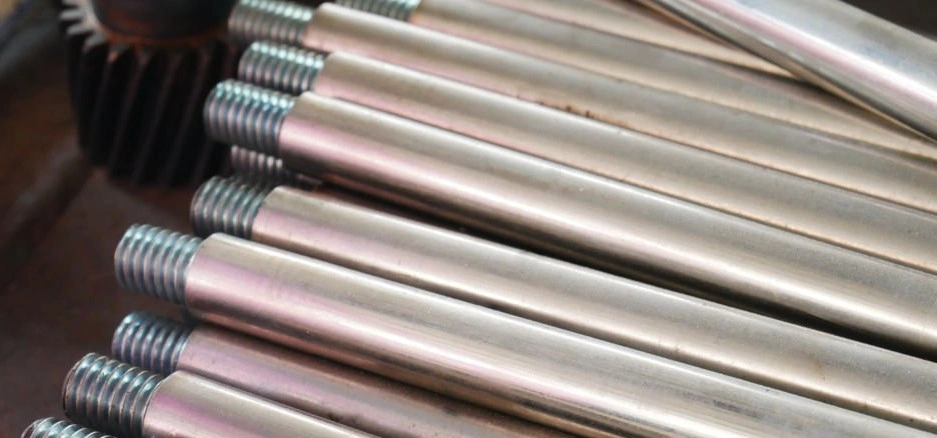
Threaded steel shafts
These motor shafting options can be made more durable through hardening, tempering, and other treatments. Using alloy steel or stainless steel is also a viable option.
Furthermore, steel is a relatively available material. Considering its excellent qualities, steel is often fairly priced.
The En24T is highly rated for motor shaft performance in high-speed applications.
For low-speed applications, a better option is 4340 low alloy steel, which has excellent toughness and hardenability.
Carbon Steel Motor Shaft
Carbon steels primarily offer ductility, but they are also case hardenable. They have one of the best blends of suitable mechanical properties and cost-efficiency.
Case hardening increases the durability and wear resistance of the material while maintaining its other properties. A case-hardened carbon steel motor shafting is resistant to impact and abrasion.
The most notable varieties are 1010 and 1045.
Tool Steel Motor Shaft
This is another applicable material for motor shafts; it is tough and wear-resistant. Tool steels such as K110 and D2 have proven capacity to withstand heavy-duty performance demands.
These two are unique because of their high wear resistance, which is handy in motor shaft applications. If you want these tool steels to be even stronger, you can subject them to bath nitriding or air hardening.
Try Prolean Now!
Motor Shaft Manufacturing Steps
At ProleanTech, motor shaft manufacturing is a regular exercise perfected over the years. Manufacturing this product means producing a variety of symmetrical and asymmetrical features, contours, splines, gears, and others, all of which we effortlessly handle.
We have the technology and human expertise to deliver custom orders faster than you can imagine. The manufacturing steps for a motor shaft are outlined below:
1 Shaft Calculations
The first step is to ascertain the torque the motor shaft will carry. The focus is the load, but rotational speed is also used. Engineers use available formulas to determine the recommended shaft parameters.
2 Shaft Design
Armed with the shaft parameters, the design team uses CAD software to generate the 3D design model of the shaft. The designers can also apply Finite Element Analysis (FEA) to establish if the motor shaft will perform as expected.
The tips shared in the coverage on crankshaft design and functionality may offer insight into what the team at ProleanTech covers in this design step.
3 Motor Shaft Machining
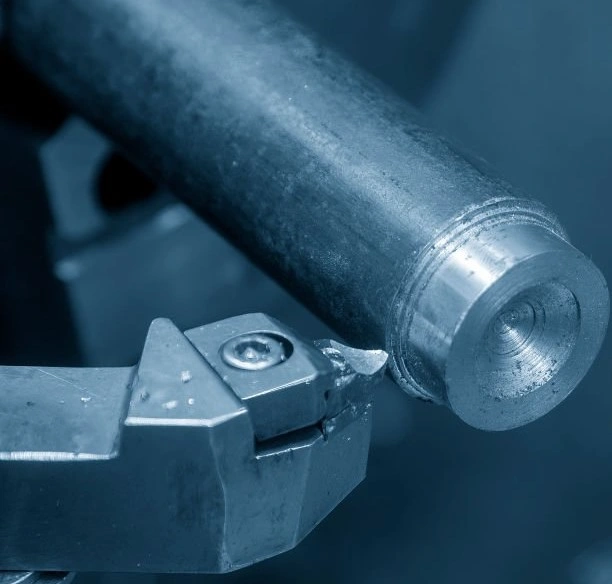
Motor shaft machining
The machining proceeds with the design as the guide. Since the stock is usually slightly bigger and out of shape, the first process is CNC turning. For additional features, CNC milling and drilling follow.
4 Surface finishing
This step is important for the desired surface and tolerances. Surface finishing options for motor shaft machining are electroplating, passivation, bead blasting, and anodizing. Others are thermal spraying, phosphating, carburizing, and nitriding.
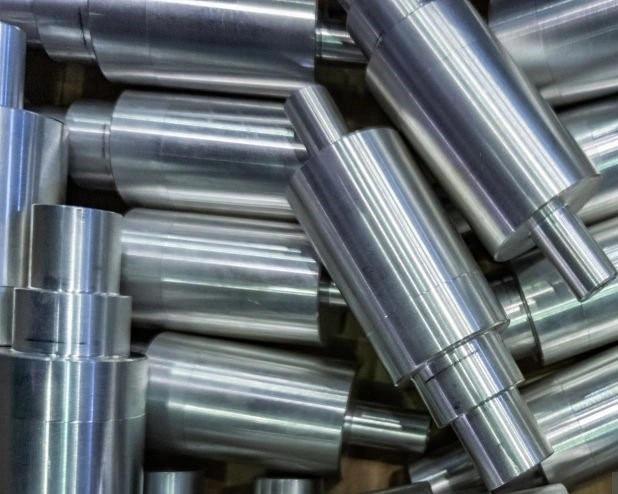
Metal shafts with shiny surface finish
Quality control
Ensuring the machined motor shaft meets the set quality standards is a critical part of the process. The team ensures that raw material properties, shaft dimensions, and surface qualities meet the standards.
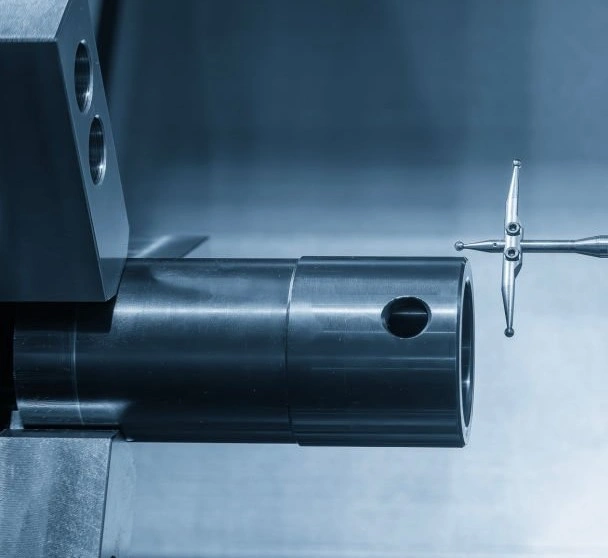
Quality control is critical.
Motor Shaft Manufacture – the Machining Methods
When you need cost-effective motor shaft solutions with guaranteed top performance, you know where to find them – ProleanTech. This is a team of experts with proven delivery of quality motor shafts to clients globally.
We know that the type and quality of metal processing methods play a critical role in delivering the ideal shaft to the customer. Below are some of the leading processes that motor shafts at the company go through:
CNC Turning
CNC turning is an irreplaceable motor shaft machining process because it creates the cylindrical shape that is typical of these components. It is the ideal method of achieving the perfect diameters and concentric holes of motor shafts.
Features on the shaft that are made using CNC turning include shoulders and bearing seats. Check the CNC turning complete guide for more on this process at ProleanTech.
CNC Milling
Characterized by a rotating mill, a CNC mill is another critical machining method in the motor shaft manufacturing processes. The manufacturers use this technique to incorporate the motor shaft’s various functional elements and geometries.
This machining technique contributes to the optimal performance of the shaft by ensuring close tolerances.
Electrical Discharge Machining (EDM)
Motor shaft manufacturers use this non-conventional metal machining technology to create the more delicate features on the shaft. EDM is also useful in adding details or improving existing features. This method is preferable where delicate motor components are involved.
CNC Drilling
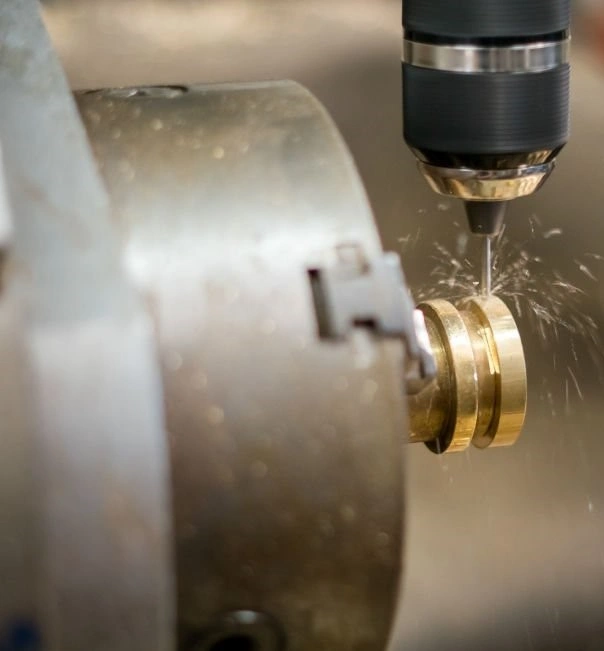
CNC Drilling
CNC drilling is a subtractive metal machining technique that creates a cylindrical hole in the shaft. These holes may be needed across the motor shaft.
CNC Grinding
CNC grinding is often the last CNC process on the motor shafting. Its goal is to attain the envisaged dimensional accuracy and surface finish.
In conclusion
Motor shafts are central to the proper functioning of the electric motor and the linked systems.
Anyone looking for a cost-effective and functional product should determine the types of shafts, functions, materials, and performance factors.
The manufacturing process is equally crucial because it determines if all the design elements are well captured. Partnering with an experienced motor shaft manufacturing company can save you all the potential worries.
ProleanTech provides the best CNC turning services, and the results are out there for all to see. Contact us today and request an instant quote.
FAQs
What is the function of a shaft?
The function of a shaft is to transmit power and torque between components in a mechanical system.
What does a motor shaft look like?
A motor shaft is usually cylindrical, and it can be of any length. Some common features of this rod-like part are splines and threads.
Can an electric motor shaft be replaced?
Yes, a motor shaft can be replaced with the proper tools and expertise to do this task.
What does an engine shaft do?
An engine shaft engages components such as the alternator and transmission system to transfer power and torque from the engine.
What is an example of a shaft?
An example of a shaft in terms of material used is a stainless steel shaft. If you were to consider the design, an example is a splined shaft.
Why are shafts important?
Motor shafts are important because they transmit power and torque from the motor to components.

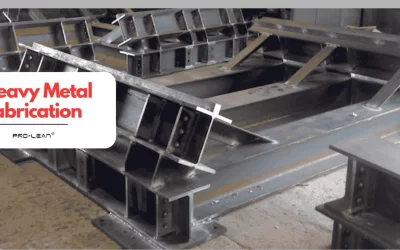
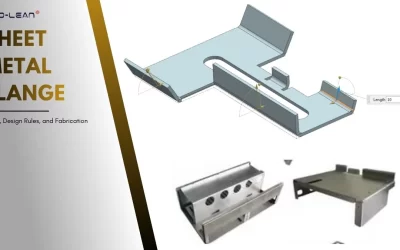
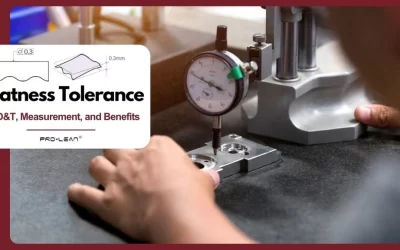
0 Comments